Forager’s Hike: Walking Through Bay Laurel and Miner’s Lettuce
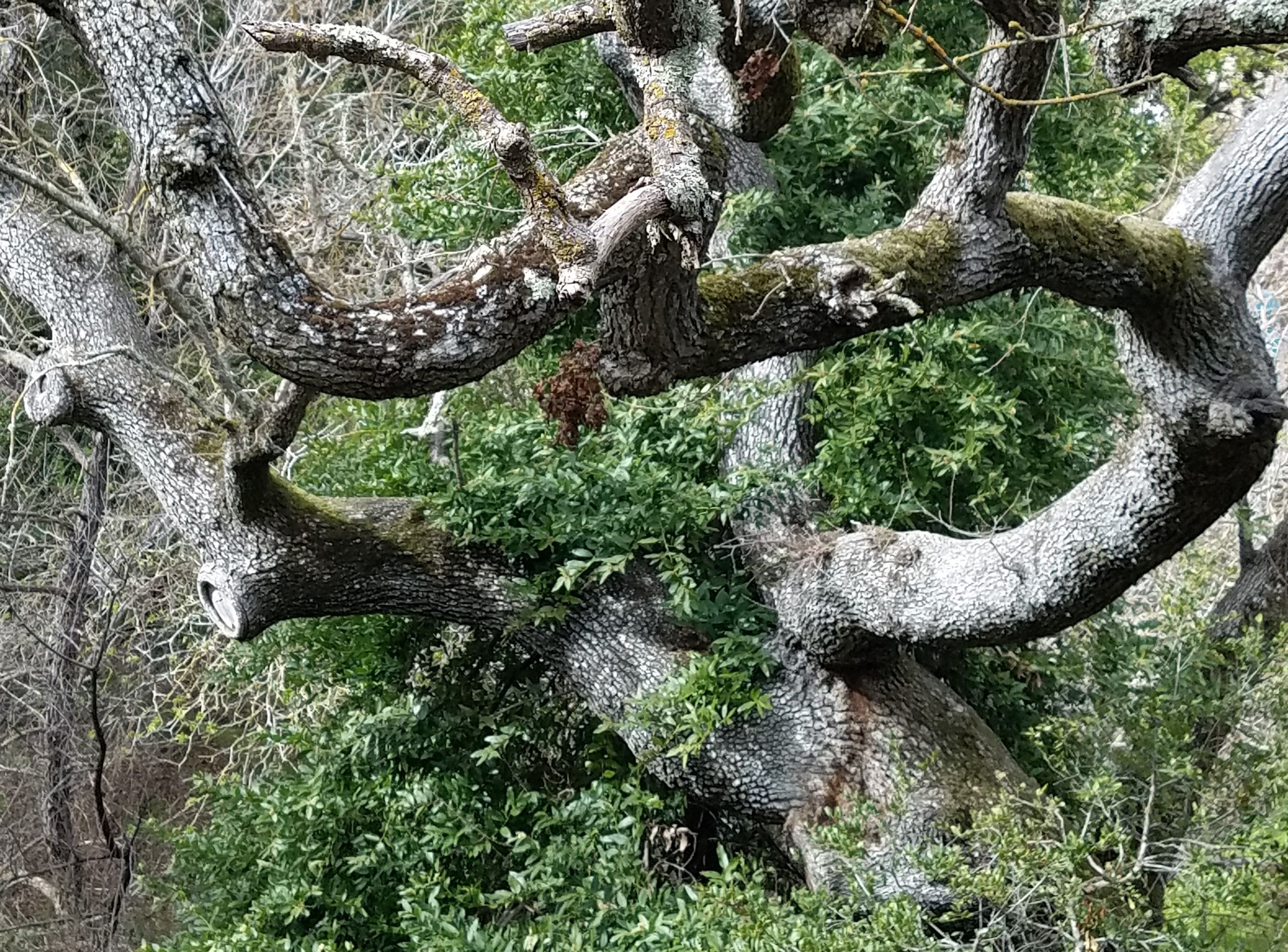
Leaving the nearest housing development, the false spring was evident already. We had warm weather in January that tricked some of the trees into budding out. But it was followed by a couple of vicious weeks in February that grounded most bees.
Here is a small peach tree from someone’s front yard that has a bird’s nest in it. The poor tree is all dressed up with no one to pollinate it. Hopefully, a few early winged insects will brave the cold snap and flutter the pollen around.
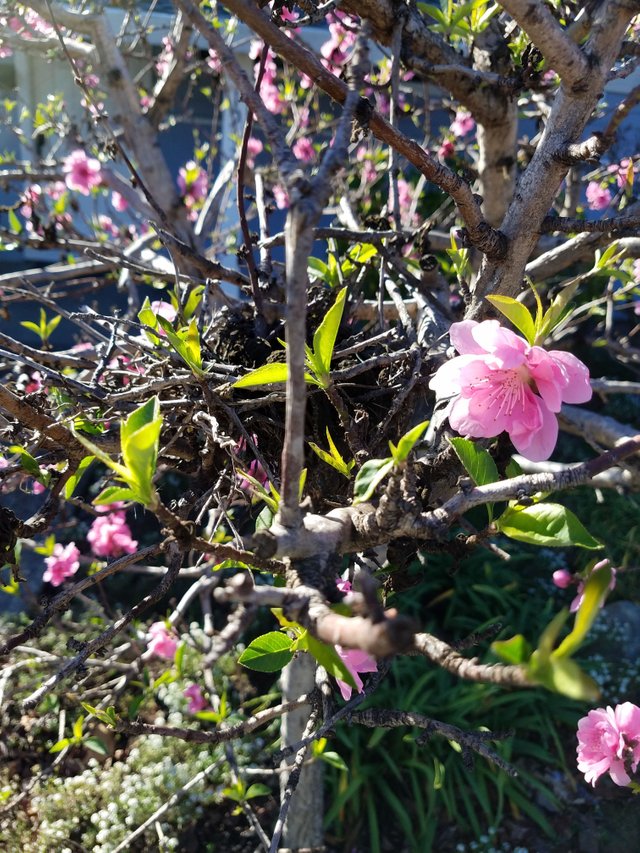
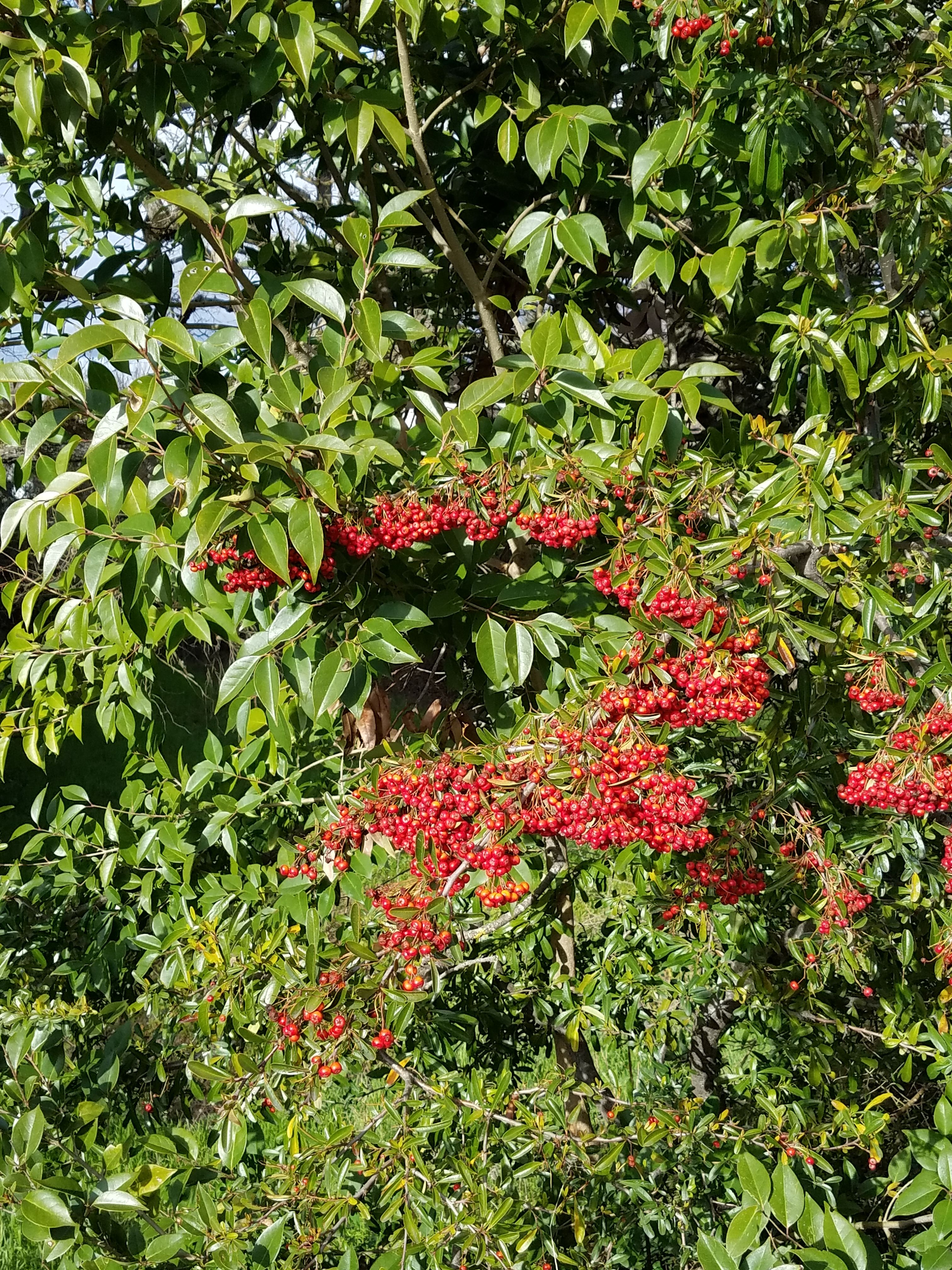
Above: Peach tree with bird's nest. Below: Bay laurel tree in the back with pyracantha bush in the foreground. Unfortunately, those berries are only for the birds.
The trail goes through a small field and then disappears into a forest of oak and bay laurel trees. If you’re familiar with culinary bay leaves, the rich aroma of the California bay laurel leaves is similar. They do not taste quite as good in cooking as the Mediterranean (culinary) bay leaves, which give a warm background flavor to stews and hearty tomato sauces.
You can use a smaller quantity of California bay leaves to similar effect, though it has a much sharper taste and using too much will overpower your food. The nuts are edible also and can be roasted for a beverage like coffee. I’ll leave them to the squirrels and the experienced foragers. For now, the flowers are just beginning, so there are no bay nuts yet.
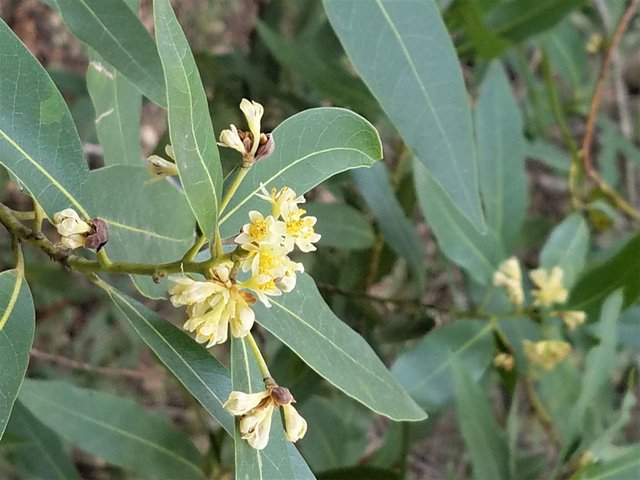
Walking in a forest carpeted by fallen bay and oak leaves releases their warm and nutty aromas most pleasantly. Both trees have dark green leaves and twisty branches. Where the forest breaks into a small meadow, a carpet of brighter green grows. Grasses, thistles, nettles, miner’s lettuce, and cow parsnips are getting an early start on spring. In addition, there are a few plants I suspect of being future wildflowers, but none are blooming yet.
While I did not plan this hike for foraging purposes, it is amazing how many edible plants I can see. Only some are at edible stages this early in the year. Down near the creek are some blackberry bushes and they will not have ripe berries on them until July or August. For the adventurous, there are the bay tree nuts and oak tree acorns; the latter need to be prepared in a way that removes the tannins, since they are too bitter for humans. Cow parsnips grow roots that are quite edible, but preparing them is labor intensive, since the outside is covered with some spikes that contain some mildly poisonous ingredient.
And then there are the wild anise plants. The ghosts of last year’s crop still stand, but you can see the new ones starting to grow around the base. Later in the summer and fall, the stalks will be delicious. They taste like licorice (but make sure not to eat the poisonous hemlock, which looks similar).
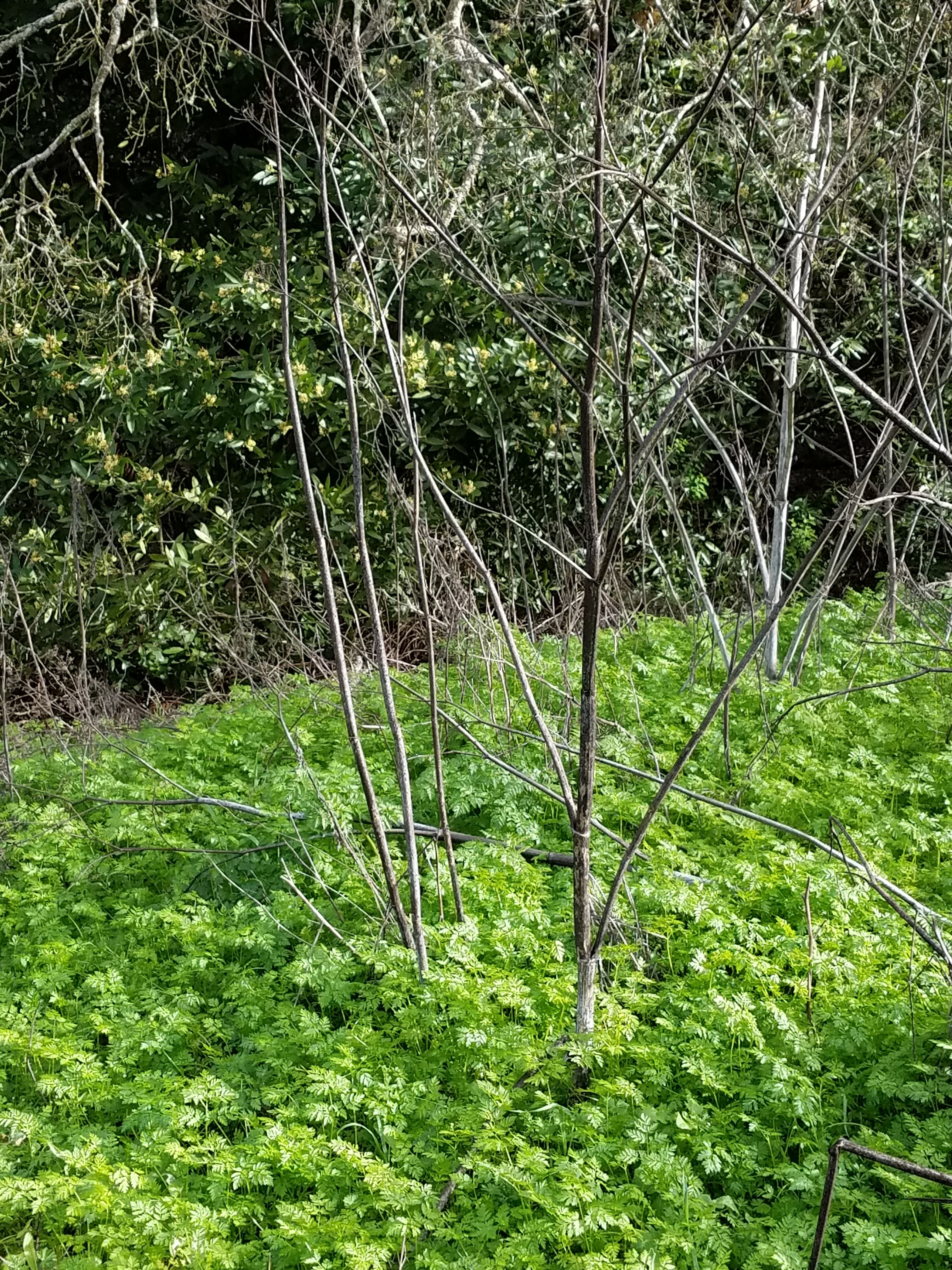
The nettles are starting also. Stinging nettle is the best known and touching it can give you a rash, but the leaves are a very nutritious green vegetable. Blanche them in hot water for a few seconds, then cook, and the offensive substance will be gone.
Best of all for fresh eating is the miner’s lettuce, a species of Claytonia also known as winter purslane. This stuff is such a tasty treat and it needs no cooking. The next couple of weeks is high season for free salads in my region, as open spaces in wet microclimates are blanketed with the thick, succulent leaves growing on their juicy stems. It is a very tender salad green, almost like eating a light lettuce such as iceberg or romaine.
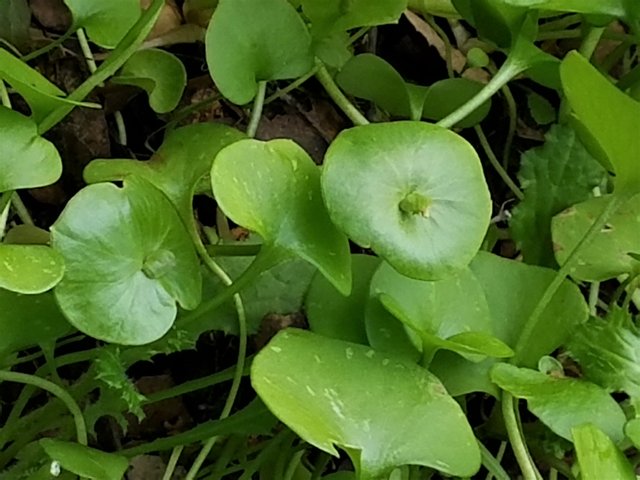
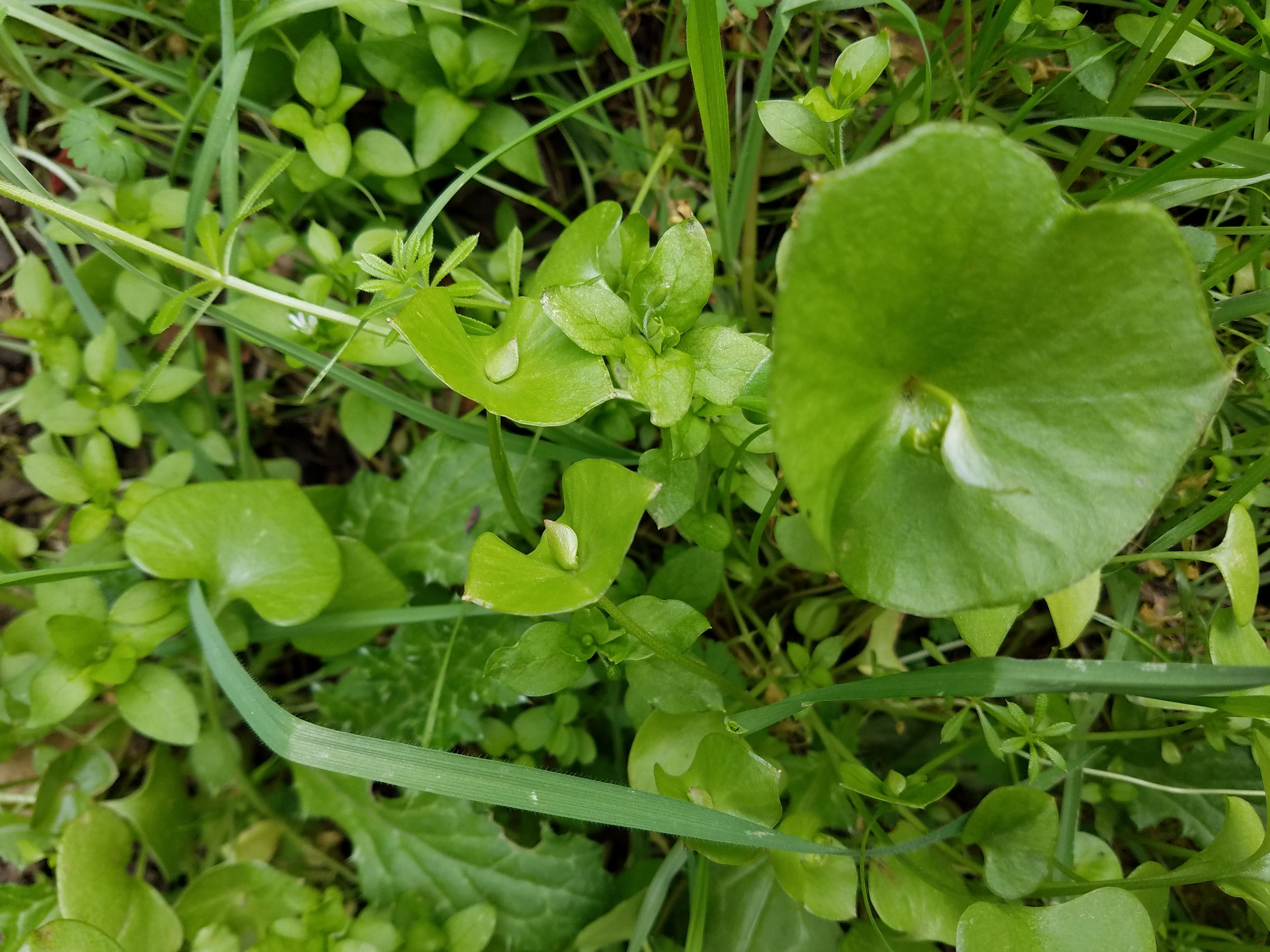
Miner's lettuce with its lovely heart-shaped small leaves and rounded mature ones. The flowers grow up inside these leaves and are edible also.
Miner’s lettuce is appropriately named because the gold miners who came to California beginning in 1849 ate miner’s lettuce to keep them from getting scurvy. Miner’s lettuce is high in vitamin C and other nutrients. One average sized salad’s worth of miner’s lettuce greens will give you 33% of your daily vitamin C needs, 22% of your vitamin A, and 10% of your iron.
In addition, like all purslane family greens, miner’s lettuce contains some omega-3 fatty acids, which are good for your skin, your brain, and other parts of your body. This is an unusual concentration in any plant because omega-3 fatty acids in the human diet normally come from animal sources such as coldwater fish (like salmon) or eggs from pastured chickens. Flax seeds, chia seeds, canola oil and certain algae are the only other non-animal sources I know about; miner’s lettuce is a more enjoyable way to get those omegas.
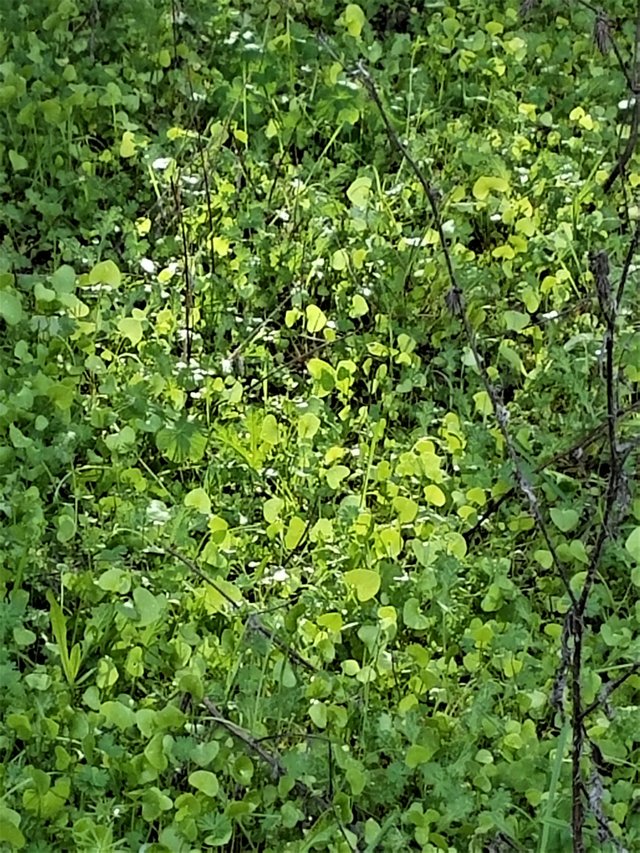
If I had enough helpers, I could pick enough salad right now to feed dozens of people. But plenty of people will not eat something that's been growing wild. Down the hill, they pay several dollars per pound for salad greens at the grocery store, but they neglect this free source of goodness growing in the hills. Once picked, miner’s lettuce is very delicate and does not last more than a couple of days in the refrigerator. And once the stems and leaves get tough in a week or two, the season will be over. It's best eaten fresh and raw: no salad dressing needed!
This oak tree has a scar that looks like a baboon.
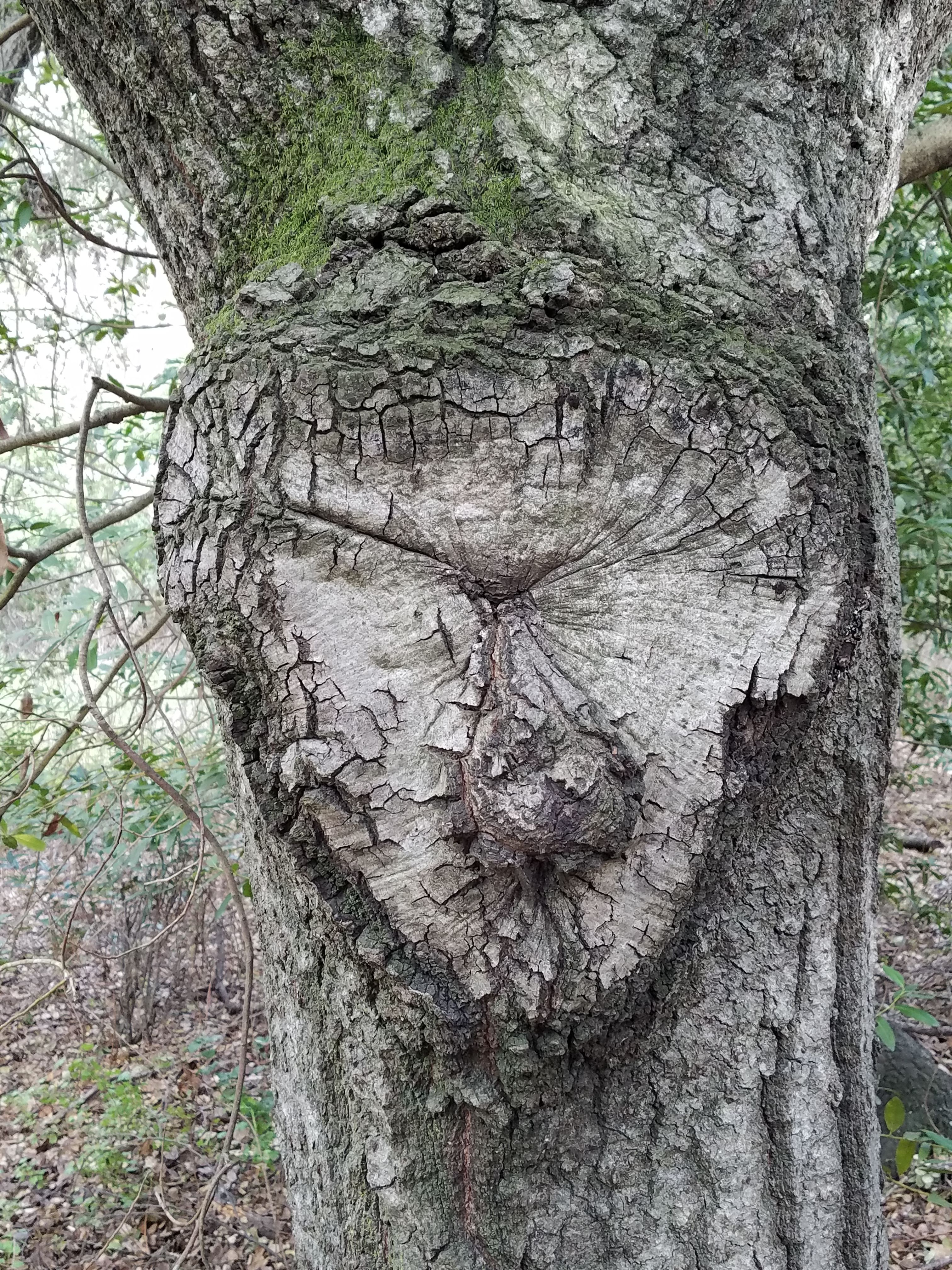
There were no baboons in the forest, but...
While under the oaks, we came across some dirt mounds near holes. This one was freshly dug and so we waited. Sure enough, a gopher appeared! It was still digging and we saw it trying to raise its body up to get something from the ground.
Gophers typically eat roots and plants they can drag down underground, but occasionally they’ll come up to grab something from the surface. Because there were no plants around, but there were acorn nuts scattered among the brown leaves, this gopher must have been hunting for acorns. Gophers are practically blind, especially when they venture above ground, so they rely on sound and smell to find their food.
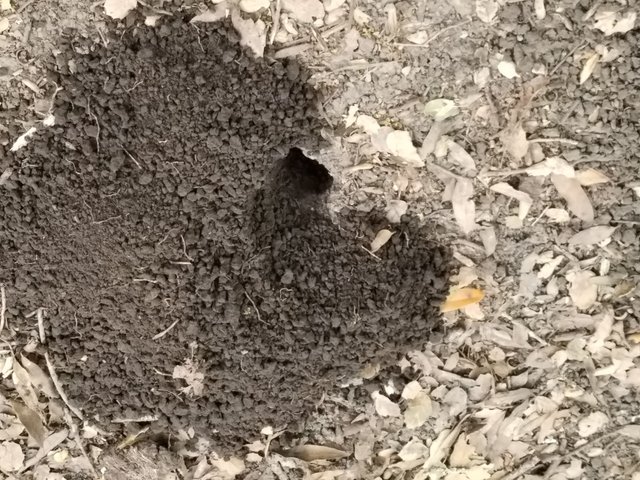
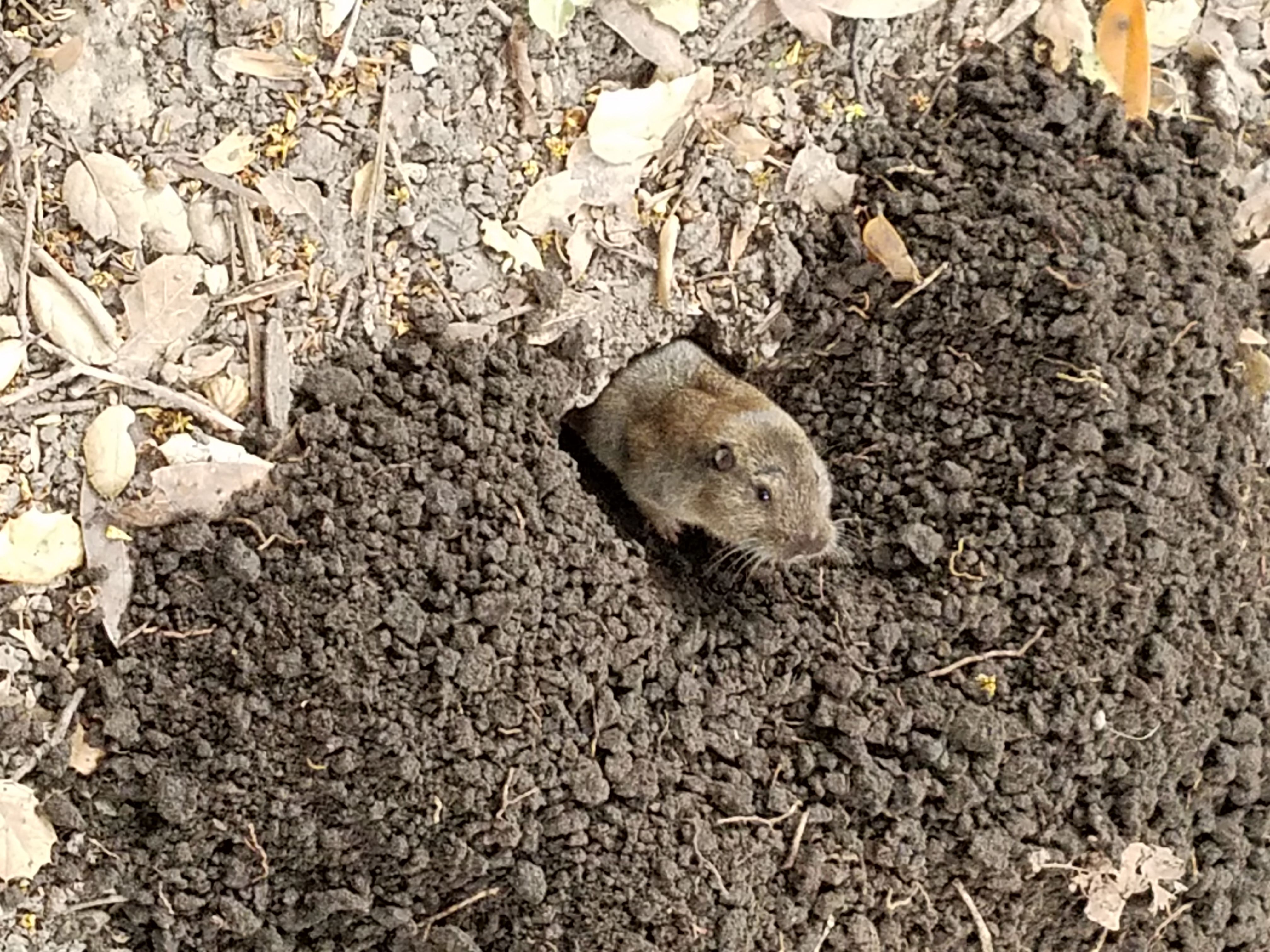
Sources:
https://en.wikipedia.org/wiki/Claytonia_perfoliata
https://www.superfoods-for-superhealth.com/miners-lettuce.html
http://www.myfitnesspal.com/food/calories/produce-miners-lettuce-wild-302959017
http://www.paleotechnics.com/Articles/Bayarticle.html
https://plants.usda.gov/plantguide/pdf/cs_umca.pdf
Top image: Twisty oak tree with dark green bay leaves in the background. All photos by the author.
Beautifull nature :D
@donkeypong, you are such a lovely dude, your writings are so captivating, you sure know how to make your audience stick to your bog all day long.
This is nature at its best, this is so beautiful.
Permit me, how were you able to know all these? did you grow up in the woods? lol.
I give you 100 percent man!
Awesome. Thank you
hello Friends
help me
please upvote https://steemit.com/food/@mistersteem/amazing-food-art-compilation-fruit-and-vegetable-carving-people-with-amazing-talent
i have no sbd :) for invest ...
Would be so lovely to go hiking there from what you show in the images.
I agree
Nature is beautiful, nothing could ever beat its beauty.
Look at the beauty of the bay laurel inter-twine with the pyracantha bush, So lovely. Sad those berries are just for birds, with so much beatiful look.
wow. Incredible information. You studied so deeply about it. I also share a photo of forest park just 10 minutes walk from my house, although it is a park but look like a forest.
Thanks for sharing. Seeing these sources of fresh food is really refreshing. It seems everything is in full bloom!
Being with nature is the most refreshing feeling we would experience. It simply relaxes us and relieve stress from the busy days in the office and noisy streets in the city.
Exactly, followed you!
I agree
Damn! So this is what bay leaf looks when it's fresh. We often see the dry ones here in Nigeria and now I think I know why . That's coz it doesn't grow here in Nigerian but in California and then imported here as dry leaves.
I so much love the taste in jollof rice and it gives it this unique taste we always get from rice cooked in parties which we call "Nigerian Party Jollof" ....I would really love to know what else bay leaves can be used to cook and will it have the same tastebwhen it is fresh and when it is dried?
Talking about the nuts. Never seen one before and how does that taste too after being roasted?
The best kind for cooking is the Mediterranean bay leaf (also known as culinary bay), so that's probably what you are getting there. The California one is more intensely flavored and more difficult to use in cooking.
Lettuce is common in the place where I live. It's very tasty mostly in winter and it has great health benefits.We don't need a melting pot in this country, folks. We need a salad bowl. In a salad bowl, you put in the different things. You want the vegetables - the lettuce, the cucumbers, the onions, the green peppers - to maintain their identity. You appreciate differences.
yeah I was shocked have actually never seen bay leaves so fresh I get to see only the dried ones in our awesome Nigerian jollof @donkeypong needs to taste it don't you think?
This is nature at it's very finest, the picture of the mole or is it mound? How can I differentiate. in the hole is classic, the edible vegetables and the bush thorns all in this woods are amazing.
I must ask, I think it's favourable there? I'm guessing it's only autumn that makes for a spent vegetation as this? Yes?
Moles make mounds with their holes in the middle. Here, we also have gophers, which push the dirt in one direction, so if the hole is on one side of the dirt it's a gopher.
Wow the difference is quite amazing @donkeypong we don't have this in Nigeria anyway, thank you for clarification
Just looking @ this post fills my heart with joy. These is because of the love I have for nature cos of its beauty. I wish I could explain why nature can be so beautiful even when it stands on its own. The amazing work of God is a mystery.
I always thought on sea food contains omega-3 fatty acids..
I never knew about miner’s lettuce...
Amazing, the scar on oak tree does look like a baboon's face..
Yes, some seafood definitely has it. Many fish normally eat some of the algae that has high concentrations of omegas.
Thank for expanding my knowledge.
Regards
Its amazing how by just walking around you are able to find so many different amounts of edible foods!
How are you able to recognize them? Did you learn from someone else? Did you learn it at school? If i got lost in the woods or hiking i'm pretty sure i wouldn't be able to save my life by eating something because i probably would not know what is edible and what is not lol!
It's fun, but it's not enough to eat very much, except at certain times of the year. I grew up hiking just a few hours from here, so I developed an early interest in the plants and animals.
It must have been nice to grow up going into nature, I've been a city dweller most of my life and it's now that I'm starting to have freedom to go out and interact with nature sometimes.
Thank you @donkeypong You have shared about the beautiful nature around you.
I'm so curious about this berries, whether this berries can not be consumed?
Only by the birds.